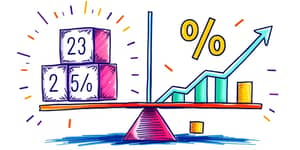
In today’s fast-paced world, managing finances manually can feel like an uphill battle. Between remembering due dates, logging into multiple accounts and deciding how much to save each month, important tasks often slip through the cracks. By embracing the power of automation, you can minimize stress, avoid costly mistakes and build a more resilient financial future.
Every manual action required in your budgeting routine adds a small barrier, or “friction,” that saps motivation and increases the chance of procrastination. Whether it’s transferring cash to savings or logging into a bill-pay portal, these tiny hurdles accumulate.
Researchers have found that small hurdles lead to big delays, and when people need to make repeated manual transfers, they often skip months or redirect funds elsewhere. By eliminating decision fatigue each cycle, automation offers a more reliable path to success.
Modern fintech solutions and bank features now allow you to set up recurring transactions and smart rule engines that handle your money without constant input. Key methods include:
These tools utilize secure connections and customizable settings to respect your unique cash flow patterns, ensuring each transaction happens at the right time without intervention.
Statistics demonstrate the impact of automation for both consumers and businesses. According to recent data:
Consumer behavior shows that 40% of Americans have at least one savings goal in 2025, yet many rely on manual, irregular transfers. By contrast, those with automated plans report fewer missed payments and more consistent account growth.
Getting started can be straightforward. Follow these steps to harness automation in your financial routine:
By following these actionable steps, you transform a manual chore into an effortless background process.
Despite clear advantages, some individuals hesitate to automate. Common concerns include security fears, loss of control and lack of awareness. To address these issues:
• Emphasize strong encryption and two-factor authentication offered by most banks and fintech firms.
• Start small: automate one bill or a modest savings amount to build trust.
• Educate yourself: many institutions provide tutorials and customer support to guide you through setup.
For older adults or those who rely heavily on cash, consider hybrid approaches. Use digital tools for large recurring obligations while maintaining a small envelope budget for daily spending.
Understanding when and who benefits most can increase your odds of success. Seasonal patterns show that tax refund recipients, especially lower-income families, experience a cash-flow spike in March and April. This ideal window for setup is perfect for initiating automation, ensuring funds move to savings before discretionary spending begins.
Additionally, younger professionals with consistent income streams and tech-savvy habits are the quickest adopters. However, targeted education can help older or less digitally fluent demographics embrace these tools.
The horizon for financial automation promises deeper integration with artificial intelligence, offering:
As these solutions mature, we can expect a fully interconnected financial ecosystem that seamlessly balances saving, spending and investing goals, delivering holistic money management in one unified platform.
By removing manual friction, automation empowers you to focus on life’s big moments, safe in the knowledge that bills get paid on time and savings steadily grow. The tools are at your fingertips—embrace them and watch your financial confidence soar.
References













